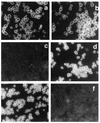Interplay between protective and inhibitory antibodies dictates the outcome of experimentally disseminated Candidiasis in recipients of a Candida albicans vaccine
- PMID: 12228271
- PMCID: PMC128316
- DOI: 10.1128/IAI.70.10.5462-5470.2002
Interplay between protective and inhibitory antibodies dictates the outcome of experimentally disseminated Candidiasis in recipients of a Candida albicans vaccine
Abstract
Mice immunized with heat-inactivated, whole yeast-form cells (Y cells) of Candida albicans developed intense, specific humoral and cell-mediated immune responses. However, they were modestly protected against a lethal challenge by the fungus, and their sera did not confer passive protection upon nonimmunized animals. Surprisingly, this immune serum conferred an elevated degree of passive protection to normal and SCID mice when preadsorbed on whole C. albicans cells. After adsorption, no antibodies specific to mannoprotein (MP)-rich extracts or secretions were detected by indirect enzyme-linked immunosorbent assay and no serum reaction with the fungal cell surface was seen in immunofluorescence assays. However, this serum had totally preserved the level of other antibodies, in particular those reacting with beta-1,3 and beta-1,6 glucan (GG). The hypothesis that anti-GG antibodies contributed to the passive protection was suggested by the following circumstantial evidence: (i) mice immunized with C. albicans cells treated with dithiothreitol and protease (YDP cells), which exposed GG on their surfaces and generated anti-GG but not anti-MP antibodies, were substantially protected against a lethal fungus challenge; (ii) the sera, and their immunoglobulin fractions, of mice immunized with YDP cells transferred protection to nonimmune animals; and (iii) this passive protection was substantially abolished by preadsorption on GG but not on intact cells. Overall, our findings demonstrate that some anti-Candida antibodies can block the protective potential of immune serum, a potential to which anti-GG antibodies appear to contribute. Our observations may also help explain why subjects with elevated anti-Candida antibody titers, inclusive of anti-MP and anti-GG antibodies, remain nonetheless susceptible to invasive candidiasis.
Figures





References
-
- Alexander, B. D., and J. R. Perfect. 1997. Antifungal resistance trends towards the year 2000: implications for therapy and new approaches. Drugs 54:657-678. - PubMed
-
- Bromuro, C., R. La Valle, S. Sandini, F. Urbani, C. M. Ausiello, L. Morelli, C. Fè d'Ostiani, L. Romani, and A. Cassone. 1998. A 70-kilodalton recombinant heat shock protein of Candida albicans is highly immunogenic and enhances systemic murine candidiasis. Infect. Immun. 66:2154-2162. - PMC - PubMed
-
- Bromuro, C., A. Torosantucci, M. J. Gomez, F. Urbani, and A. Cassone. 1994. Differential release of an immunodominant 65 kDa mannoprotein antigen from yeast and mycelial forms of Candida albicans. J. Med. Vet. Mycol. 32:447-459. - PubMed
-
- Brown, G. D., and S. Gordon. 2001. Immune recognition: a new receptor for β-glucans. Nature 413:36-37. - PubMed
Publication types
MeSH terms
Substances
LinkOut - more resources
Full Text Sources
Other Literature Sources
Medical

